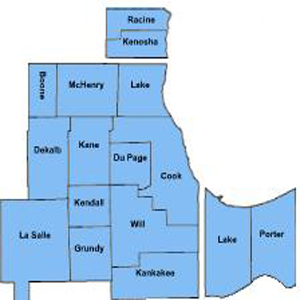Orland Fire District Pension one of the region’s best
OFPD Pension Fund rank among Nation’s best
By Ray Hanania
A recent study by the Better Government Association (BGA) noted that almost 25 percent of the 217 police and fire pension funds in Cook County were more than 50 percent under funded, placing a huge long term debt on taxpayers.
Like many public studies, the BGA report unfortunately failed to identify pension funds that are financially healthy and properly or fully funded, and it failed to look at the status of pension throughout the rest of Illinois.
According to the BGA, a minimum of 80 percent funding is considered to be healthy and serious underfunding could jeopardize pension plans. A law approved by the Illinois Legislature in 2010 requires such pension plans to be 90 percent funded by 2040.
Orland Fire Protection District Treasurer Chris Evoy said the fire pension fund for the Orland Fire district is actually 96.4 percent funded and the IMRF fund is 103.8 percent funded. He credited the district board’s policy of tight financial management for reversing the fund’s past underfunding challenges.
“It is unfortunate that good government and good financial management do not get the spotlight. Regardless, though, I am proud that the Orland Fire Protection District’s pension is secure and almost 100 percent funded and that’s significant,” Evoy said.
“During the past three years, this board has worked hard to carefully review every expenditure and every investment to reduce waste, improve efficiency and maximize every dollar that taxpayers in the Orland Fire Protection District contribute towards fire protection.”
Jim Hickey, OFPD Board Chairman, said that the board not only has one of the best managed Fire Pensions in the Midwest, but also has saved taxpayers more than $20 million in spending that might otherwise have been approved by past boards.
“When this new board took control of the district and the budget, our first priority was to reign in the spending. It was out of control,” Hickey said.
“That’s not easy to do because everything has a cost. So we have to find ways to maintain and increase our exemplary emergency services to our residents while holding the line on spending and even cutting back on spending. Every million dollars saved each year is a million dollars that remains saved in future years.”
Hickey said he watched the budget rise from $25 million to more than $32 million in 2011 under the former board leadership.
“We have managed to bring spending down to under $30 million and as low as $29 million,” Hickey said.
“The savings are compounded. The cornerstone of this success has been the management of debts and obligations and carefully review all spending by the district.”
Evoy said that as of December 31, 2012, which is the most recent actuarial date, the District’s Fire Fighter Pension Fund was 96.4 percent funded and the Illinois Municipal Retirement Fund was 103.8 percent funded.
He said that in December 2012, the District used its outstanding credit rating of “Aa1” rating from Moody’s Investors Service, one of the best in the region, and the district’s low debt ratio coupled with historically low interest rates, to refinance the actuarial unfunded liability of its pension funds and achieve significant savings through lower interest rate borrowing.
The Fire District had a “soft debt” of $26.7 million that was being carried at an interest rate of more than 7 percent over a 40 year period. The District board refinanced the debt at a rate slightly over 4 percent and reduced the repayment plan to 20 years.
Evoy said the refinancing of the debt certificates raised the funded ratio of the Fire Fighter Pension Fund from 72.9% to 96.4% and the funded ratio of the Illinois Municipal Retirement Fund increased from 96.4% to 103.8%.
“The interest rate on the debt certificates was 4.42 percent which is significantly less than the investment earnings assumption (7.4 percent) and the term of the debt was reduced substantially,” Evoy said.
“This transaction is beneficial to the District because it will result in long-term taxpayer savings and will help manage the impact of funding the District’s pensions in the future.”
The BGA reported there are 217 police and fire pension funds in suburban Cook County with collective assets of nearly $5 billion. The retirement funds are intended to provide public safety workers and their families with stable retirement incomes.
In all, unfunded liabilities for police and fire pension funds throughout suburban Cook County total $3.3 billion, according to a BGA analysis of the most recent municipal pension fund data.
Fifty-eight or roughly a quarter of the systems were less than half-funded, meaning there was fewer than 50 cents for every dollar owed in long-term benefits, according to the analysis. Generally, a minimum 80 percent funding is considered healthy. A state law approved in 2010 requires such pension plans to be 90 percent funded – by 2040.
Statewide there are 660 police and fire retirement systems outside Chicago. State law requires towns with 5,000 or more residents and which employ at least one full-time police officer or firefighter to create and administer pension systems for those workers. A fire protection district must create a fund if it employs at least one full-time firefighter.
In suburban Cook County there are 121 police and 80 fire pension funds, plus 16 separate fire protection district pension funds. In all, there are 5,900 annuitants; an additional 8,500 police and firefighters could collect a pension down the road.
BGA Report link:
http://www.bettergov.org/suburban_pension_peril/
END
admin
Latest posts by admin (see all)
- New book on PR helps Minorities and Ethnics overcome media bias - October 9, 2014
- Poll: Emanuel’s Unfavorables Rival Green Bay, Traffic - October 7, 2014
- Cicero and Berwyn Celebrate the 46th Annual International Houby Day Parade - October 7, 2014


 Follow
Follow





